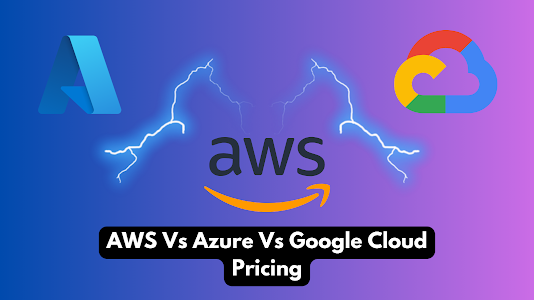Comparing AWS Pricing with Azure and Google Cloud
For organizations considering cloud services, comparing costs among providers is essential. AWS, Azure, and Google Cloud are the three biggest names, each offering a unique mix of services and pricing models. Here’s how they stack up and what you should consider when deciding.
AWS Pricing Overview
AWS is known for its extensive service portfolio and flexible pricing. Its pay-as-you-go model allows users to only pay for what they use, which is appealing to startups and enterprises alike. AWS also offers discounts for reserved instances and Savings Plans, making it easier for businesses to optimize expenses.
One tool that makes AWS pricing particularly user-friendly is the AWS Pricing Calculator, which helps create estimates based on customized scenarios. This approach provides greater transparency and control, especially for complex workloads. Learn more about AWS, Azure and Google Cloud Pricing.
Azure’s Pricing Structure
Azure’s pricing is competitive with AWS, offering similar flexibility through a pay-as-you-go system and reserved VM instances. One area where Azure stands out is its hybrid cloud capabilities, as it allows seamless integration with on-premises Microsoft environments. This makes it an ideal choice for businesses already using Microsoft products.
Azure also offers a pricing calculator, though some users find AWS’s tools more extensive. Still, for organizations with hybrid needs, Azure’s setup can offer a distinct advantage.
Google Cloud’s Approach to Pricing
Google Cloud’s pricing model focuses on simplicity. It offers sustained-use discounts automatically as workloads increase, which can be beneficial for companies with heavy usage. Google Cloud also provides preemptible VMs, a low-cost option for non-critical workloads. Like its competitors, Google Cloud offers a pricing calculator for forecasting.
Comparing AWS, Azure, and Google Cloud
Each provider has its strengths. AWS offers the broadest range of services, Azure is ideal for hybrid cloud setups, and Google Cloud is often favored for its data-centric tools. Cost-wise, each platform provides options to fit different needs, so the right choice will depend on specific use cases. Dive deeper into AWS, Azure and Google Cloud Pricing to make an informed decision.
Conclusion
Choosing the right cloud provider involves weighing costs, capabilities, and long-term goals. With AWS, Azure, and Google Cloud, there are robust options to suit any organization’s requirements, so take time to evaluate them based on your business’s unique needs.




Comments
Post a Comment